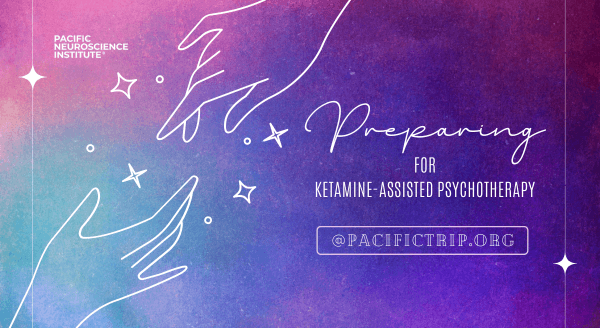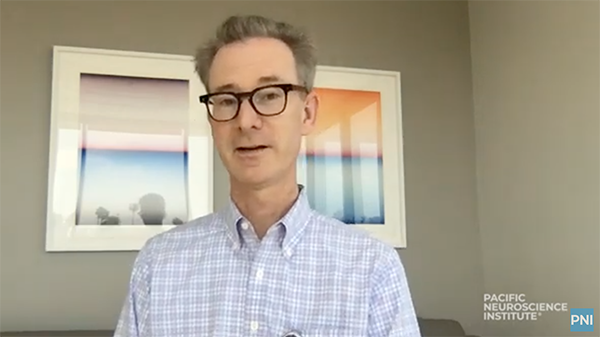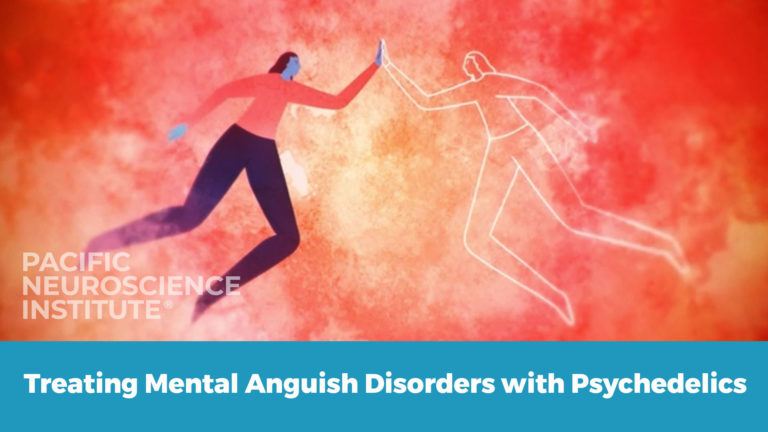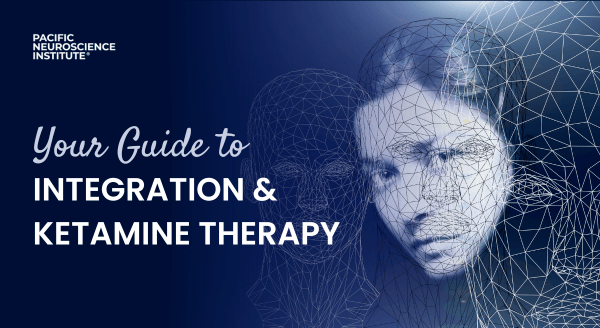

Preparing for Ketamine-Assisted Psychotherapy
by Zara Jethani
Preparation for ketamine-assisted psychotherapy (KAP) involves several key components aimed at ensuring the safety and efficacy of the treatment, as well as preparing the patient mentally and emotionally for the experience.
At the Treatment & Research In Psychedelics (TRIP) Center at Pacific Neuroscience Institute® our expert team takes a holistic approach to treating patients with a wide array of mental health conditions such as depression, anxiety, PTSD, and addiction.
Here are some common elements involved in a preparation session for ketamine-assisted psychotherapy:
- Initial Assessment:
The therapist conducts an initial assessment to gather information about the patient’s medical history, mental health condition, current medications, substance use, and any previous experiences with psychedelics or ketamine. - Informed Consent:
The therapist discusses the risks, benefits, and potential outcomes of ketamine-assisted psychotherapy with the patient and obtains their informed consent to proceed with the treatment. - Setting Expectations:
The therapist explains what the patient can expect during the ketamine experience, including the duration of the session, potential physical and psychological effects of ketamine, and the therapeutic process. - Establishing Trust:
Building a trusting therapeutic relationship between the patient and therapist is essential for the success of ketamine-assisted psychotherapy. The therapist creates a safe and supportive environment where the patient feels comfortable expressing their thoughts and emotions. - Managing Anxiety:
The therapist helps the patient manage any anxiety or apprehension they may have about the upcoming ketamine experience. This may involve teaching relaxation techniques, mindfulness practices, or addressing any concerns the patient may have. - Setting Intentions:
The therapist works with the patient to clarify their mindset, namely their intentions and goals for the ketamine session. This may involve exploring what the patient hopes to gain from the experience and identifying areas of focus for the therapeutic work. - Preparing for Integration:
Integration refers to the process of making sense of and integrating insights gained during the ketamine experience into daily life. The therapist discusses strategies for integration with the patient and emphasizes the importance of ongoing therapeutic work outside of the ketamine sessions. - Safety Precautions:
The therapist reviews safety protocols with the patient, including measures to prevent potential adverse reactions to ketamine and procedures for managing any unexpected challenges that may arise during the session. - Support System:
The therapist encourages the patient to identify a support system of friends, family members, or other trusted individuals who can provide support before, during, and after the ketamine session. - Follow-Up Plan:
After the preparation session, the therapist develops a follow-up plan with the patient, which may include scheduling subsequent ketamine sessions, ongoing therapy sessions, and monitoring the patient’s progress and well-being.
Overall, the preparation session for ketamine-assisted psychotherapy is a collaborative process between the patient and therapist aimed at ensuring a safe, supportive, and therapeutic experience.
For more information about ketamine-assisted therapy, contact us at 310-582-7612 or schedule a consultation.
KAP Specialty Team at TRIP
Useful Links
Related Articles
Related Videos
 Navigating New Frontiers: Exploring Psychedelic-Assisted Therapy at TRIP
In the complex landscape of mental health, a revolution is underway: psychedelic-assisted therapy. At the forefront of this movement is the TRIP Center at Pacific Neuroscience Institute. The Treatment &…
Navigating New Frontiers: Exploring Psychedelic-Assisted Therapy at TRIP
In the complex landscape of mental health, a revolution is underway: psychedelic-assisted therapy. At the forefront of this movement is the TRIP Center at Pacific Neuroscience Institute. The Treatment &…
 Psychedelic-Assisted Therapy with Ketamine at PNI
Using ketamine in a psychedelic-assisted approach, we treat people 16 years and older who are treatment-resistant or who wish to effectively tackle deep-rooted, unresolved trauma that has not been adequately…
Psychedelic-Assisted Therapy with Ketamine at PNI
Using ketamine in a psychedelic-assisted approach, we treat people 16 years and older who are treatment-resistant or who wish to effectively tackle deep-rooted, unresolved trauma that has not been adequately…
 Treatment & Research In Psychedelics (TRIP) at Pacific Neuroscience Institute | Explainer
At PNI’s Treatment & Research In Psychedelics (TRIP) Program, we conduct clinical trails at the forefront of innovative and transformative medicine. TRIP, spearheaded by Daniel Kelly, MD and Keith Heinzerling,…
Treatment & Research In Psychedelics (TRIP) at Pacific Neuroscience Institute | Explainer
At PNI’s Treatment & Research In Psychedelics (TRIP) Program, we conduct clinical trails at the forefront of innovative and transformative medicine. TRIP, spearheaded by Daniel Kelly, MD and Keith Heinzerling,…

Navigating New Frontiers: Exploring Psychedelic-Assisted Therapy at TRIP

Psychedelic-Assisted Therapy with Ketamine at PNI

Treatment & Research In Psychedelics (TRIP) at Pacific Neuroscience Institute | Explainer
About the Author

Zara Jethani
Zara is the marketing director at Pacific Neuroscience Institute. Her background is in molecular genetics research and healthcare marketing. In addition, she is a graphic designer with more than 20 years experience in the healthcare, education and entertainment industries.
Last updated: March 16th, 2024





